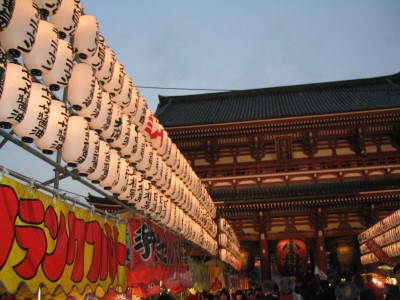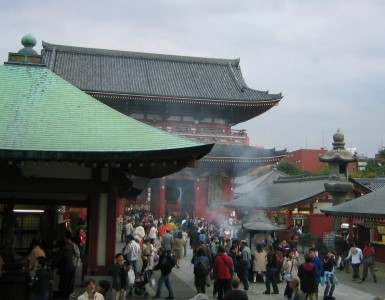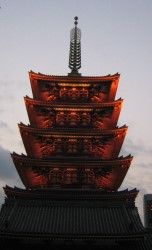Asakusa Kannon Temple
Tokyo
Oct. 24, 2004
On Sunday afternoon I joined a tour of traditional sites in Tokyo, including the Imperial gardens and this temple, originally built in 628 A.D., to house a little gold statue of the goddess of mercy. Our guide told us that more than 90% of Japanese consider themselves Shintoists, paying reverence to ancestors and, in some cases, any one of several million spirits believed to reside in nature around us. Shintoism, she said, mostly addresses needs and desires in the here and now, and so when Buddhism arrived in Japan, it neatly complemented Shintoism with its emphasis on a moral and spiritual progression over many lives. More than 80% of Japanese also practice Buddhism; there's no conflict between the two, as neither demands exclusivity. When Christianity arrived in the 15th century, some Japanese tried to add it to their retinue. But as the Old Testament reminds us, Jehovah "is a jealous God." Monotheism doesn't look kindly on multiple religious passports, so Christianity fell out of favor in Japan.




